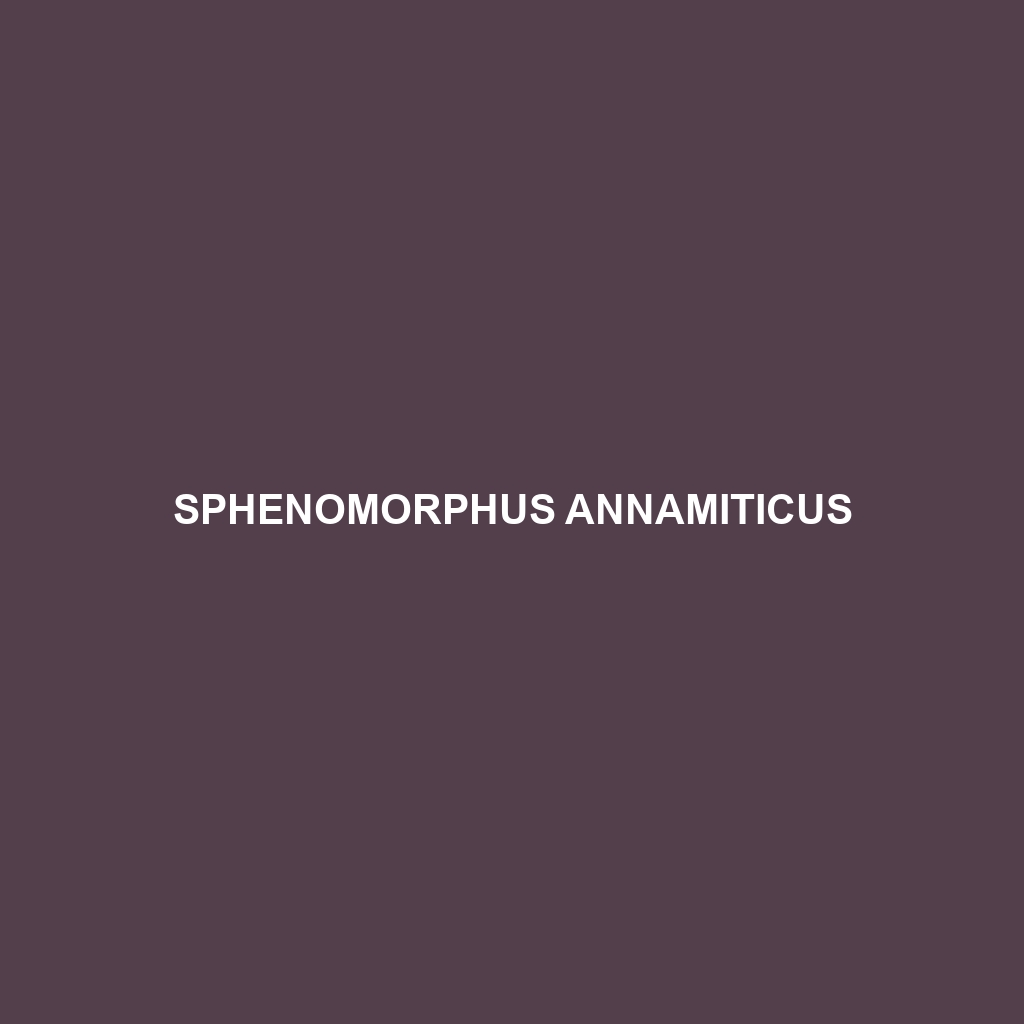Common Name
Sphenomorphus annamiticus
Scientific Name
Sphenomorphus annamiticus
Habitat
The Sphenomorphus annamiticus, commonly known as the Annam skink, is primarily found in the lush landscapes of Southeast Asia. This species thrives in diverse habitats, including humid rainforests, temperate forests, and well-vegetated grasslands. The geographic range of Sphenomorphus annamiticus extends throughout Vietnam, Laos, and parts of Cambodia, where the climate is predominantly tropical, characterized by high humidity and significant rainfall. These environmental conditions create an ideal setting for the Annam skink, which flourishes in areas rich in leaf litter and ground cover that provide both shelter and abundant foraging opportunities.
Physical Characteristics
Sphenomorphus annamiticus is notable for its distinct physical features. Adults typically measure between 12 to 15 centimeters in length, possessing a slender body that allows for agile movement through underbrush and leaf litter. The coloration is generally a blend of earthy tones, often displaying a combination of brown and green hues that serve as effective camouflage against natural backgrounds. One of its distinguishing characteristics is the presence of smooth, shiny scales that can reflect light, aiding in its concealment from predators. Additionally, the Annam skink has a pointed snout and proportionally large eyes, which enhance its spatial awareness in dense forest environments.
Behavior
The behavior of Sphenomorphus annamiticus is a fascinating aspect of its biology. This skink is primarily diurnal, meaning it is most active during the daylight hours. Notably, it exhibits a range of social interactions, often found basking on sunlit rocks or logs before retreating into the foliage. During mating seasons, males engage in elaborate courtship displays that involve body posturing and tail waving to attract females. Additionally, this species is known for its ability to escape threats by darting quickly into tight spaces, showcasing its agility. The Annam skink has also been observed displaying territorial behavior, particularly during the breeding season when males will defend their area from rivals.
Diet
Reproduction
The reproductive cycle of Sphenomorphus annamiticus is relatively straightforward yet intriguing. Breeding usually occurs during the warmer, wetter months, with females laying clutches of 2 to 6 eggs in concealed nests within the leaf litter. The incubation period lasts approximately 60 to 70 days, after which the hatchlings emerge fully formed and capable of independent survival. Parental care is minimal, with the female leaving the eggs to develop on their own. This reproductive strategy aligns with the species’ need for camouflage and safety from predators in their natural habitat.
Conservation Status
The conservation status of Sphenomorphus annamiticus is currently classified as Least Concern by the International Union for Conservation of Nature (IUCN). However, its population faces potential threats from habitat destruction due to deforestation, agriculture, and urban development. Conservation efforts are vital to monitor existing populations and protect their native habitats from degradation. Public awareness and habitat restoration initiatives are essential in ensuring the long-term survival of this skink species in Southeast Asia.
Interesting Facts
One fascinating fact about Sphenomorphus annamiticus is its remarkable ability to regulate its body temperature by basking in sunlight and retreating to cooler shelter when necessary. This thermoregulatory behavior aids in maintaining optimal bodily functions and enhances its foraging efficiency. Additionally, the Annam skink has a unique adaptation – when threatened, it may shed its tail as a defensive mechanism, allowing it to escape while the predator is distracted by the writhing tail. This capability, while costly to the skink, increases its chances of survival in the wild.
Role in Ecosystem
The ecological role of Sphenomorphus annamiticus is significant in maintaining the health of its ecosystem. As a predator, it helps control the populations of insects within its habitat, thereby contributing to ecological balance. This skink also acts as a prey species for larger predators, thus playing a role in the food web. Furthermore, by burrowing through leaf litter, it aids in nutrient cycling and soil aeration, which benefits plant growth. The Annam skink serves as an integral component of its forest ecosystem, showcasing the richness of biodiversity in Southeast Asia.
